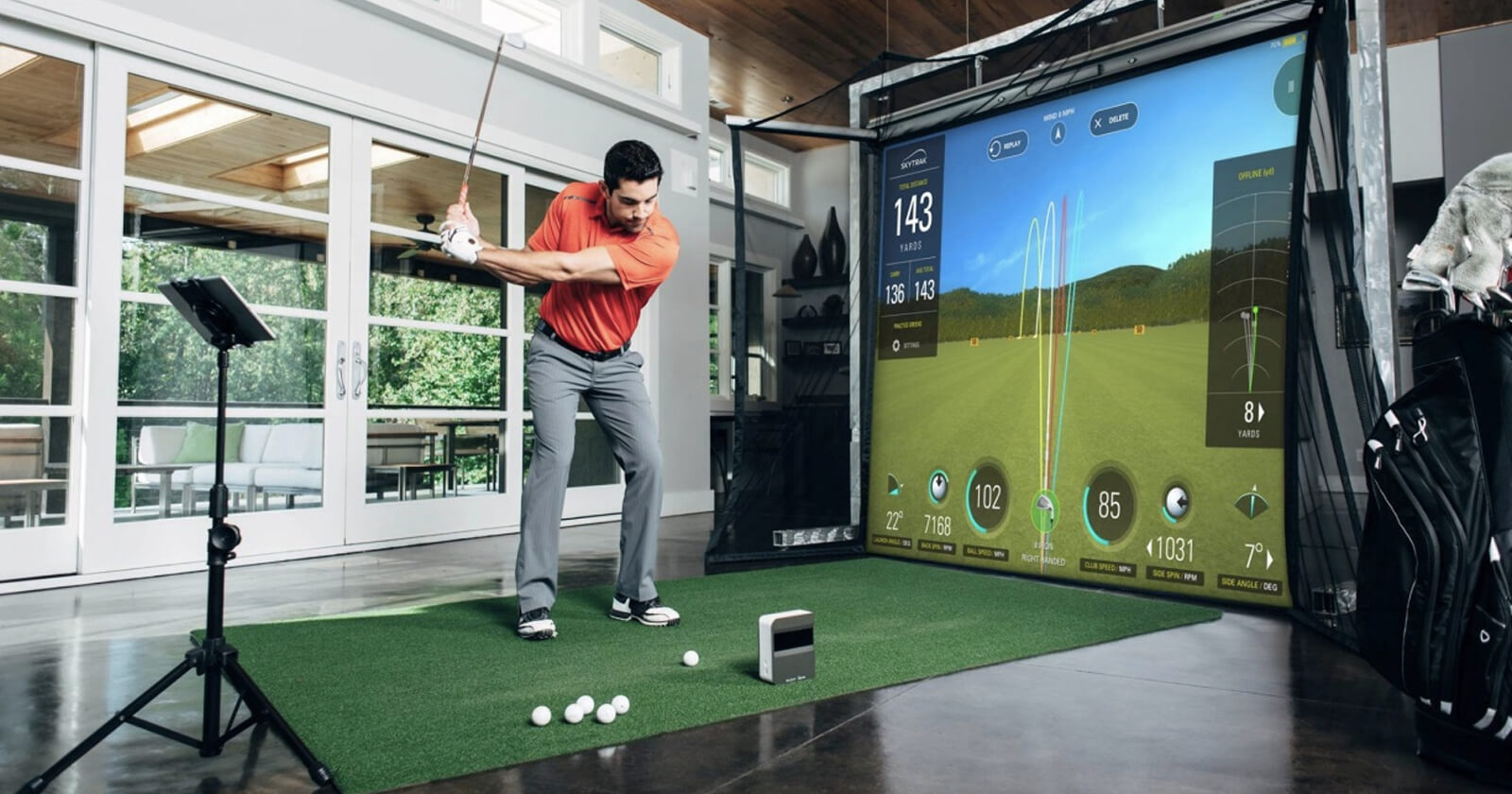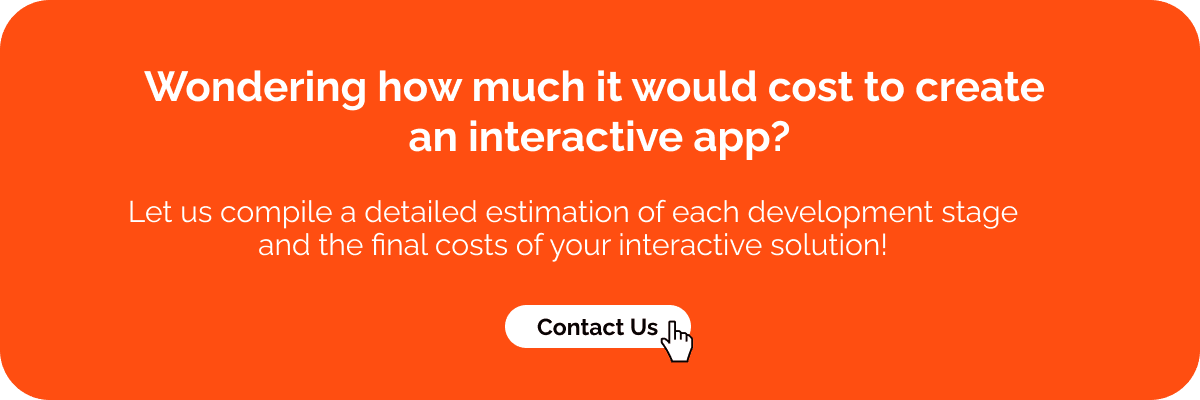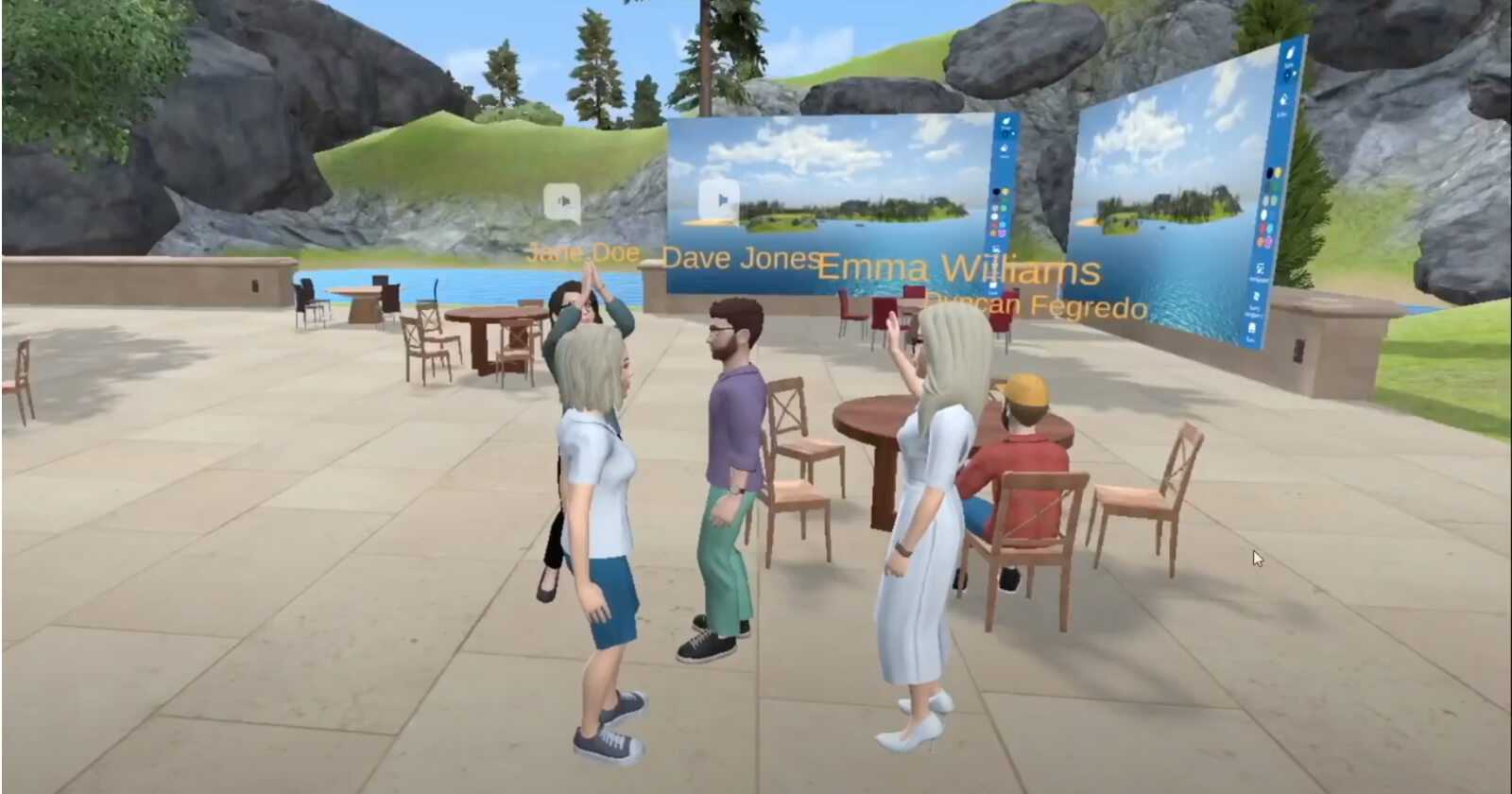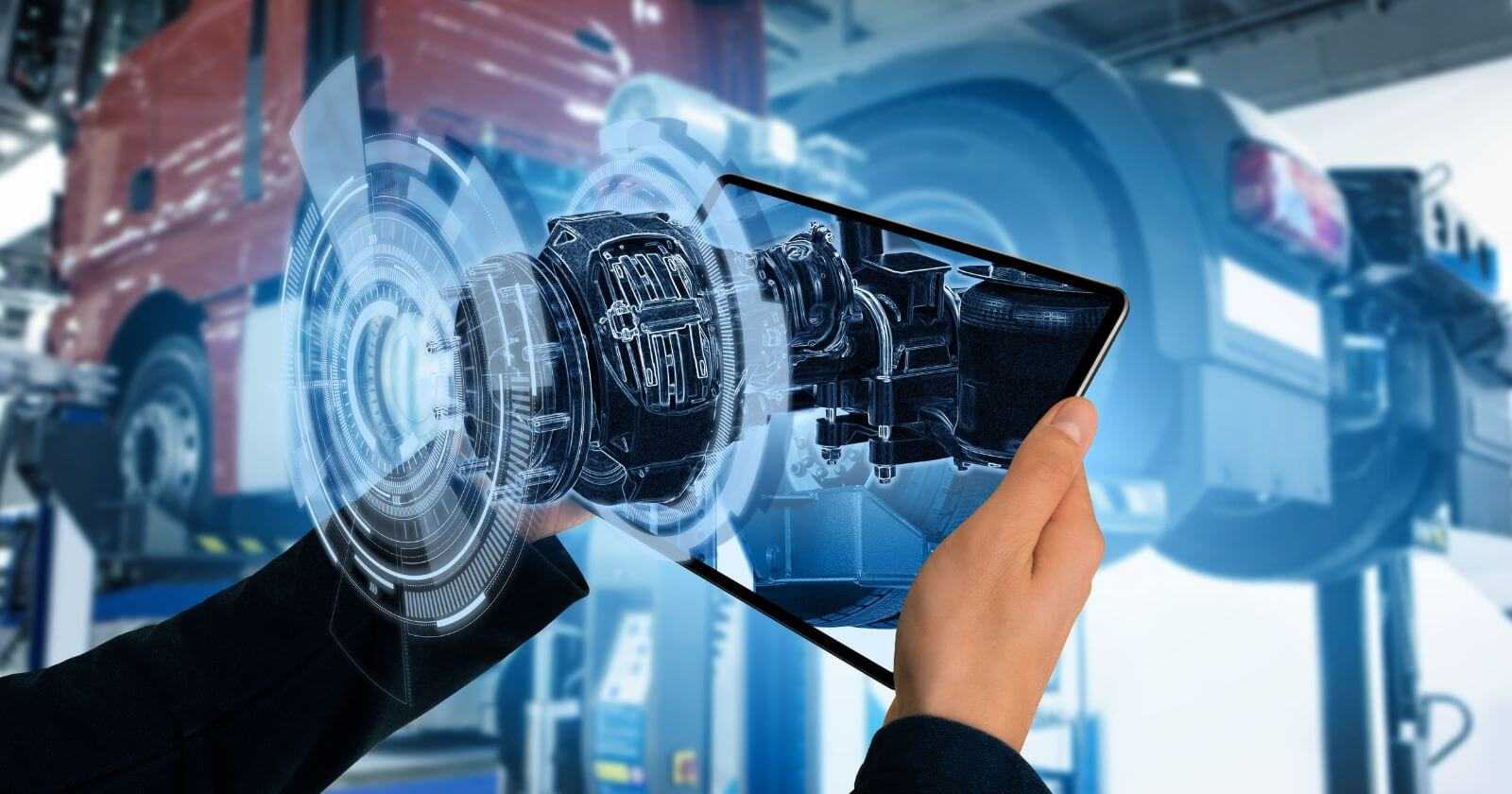An interactive app term may be applied to a wide range of software applications. Put it simply, it is an application that allows users to interact with audiovisual information via gamification, visualization, and even VR/AR. Basically, every app has some kind of interactivity.
In this article, we’ll concentrate on the applications that connect two worlds together: the real and the projected ones. The latter is the one we see on our screens, the one we use in our everyday life through our computers and mobile devices, even if it’s just a projection of the real world. You will see how interactive apps development for your business may help a product grow exponentially.
Projected World of Incredible
The game development expertise helps to see the difference and feel the connection between the real and the imaginary worlds a whole lot easier. Nobody’s hiding that every realm inside any game is more or less fiction and only the author’s imagination limits its bounds.

The same thing we experience in regular apps while ordering pizza or calling an Uber. We interact with the projected world or its part.
Let’s just check an example of the pizza ordering and delivery app in detail!
Such an application has a few simple steps to order a good:
- Choose a core, like pizza style;
- Pick toppings, like more cheese, onions, or many other tasty things;
- Decide on a delivery address and time;
- Select the payment method;
- Pay and wait for the best pizza ever.
Usually while waiting, you can see some kind of progress: assembling, baking, delivering. Sometimes it’s even possible to track the courier movement along the way attempting to deliver pizza as fast as possible, while it is still hot.
The more steps an app offers, the more understanding you have about the process, the better your overall experience. It all allows you to see what exactly is going on with your pizza and predict the delivery time, especially when you see a courier icon around the corner.
When you’ve received your hot, delicious pizza, you’re happy, but your happiness started long before you get it. It started with the first step when you saw different pizza’s core images. Those pictures helped you to imagine better the outcome and each next step brought you closer to that incredible taste in your mouth.
So what just happened?
An app with the projected world of pizza inside helped you to enjoy life, far before you received the wished good. Ten years ago it was impossible. We all had silly phones that helped us to make a phone call, receive SMS, and play a snake if we were lucky enough to have the right phone.
Now, we can see.
We still see the projected world through a small window, the screen of a smartphone. However, it is a real window to something incredible, something that makes your life far better.
What Are the Core Elements of a Really Interactive App?
What makes a great interactive application, you ask? No doubt, the real world is awesome. The projected one is not a competitor, not at all. It is just a simplified version of a viable process, packed and tailored with art for your convenience.

Art
Art here is the key element. Because a projection is just how we see it, how we feel it. The artist who finds the best pattern fitting into the minds of the masses gets famous. Some people require something original, others prefer custom patterns. Therefore it is a vast ocean of opportunities for artists limited only by individual imagination.
In our lovely pizza app example, there are billions of various designs including drawn pizzas, photos, 3D art, text descriptions – the options and forms are endless.
But there’s one thing that binds all these combinations – it’s a projection of a real-world pizza.
Art helps people to see the outcome, to predict that delicious taste in their mouths far before they even try it.
Vision
We all perceive the outside world through the prism of our senses. We hear, feel, and many more. Probably the most important channel of perception for us is a vision. Vision connects our brain with the outside world, so we can interact with it a lot easier. Blind people see the world through other senses, although it’s much more complicated.
Vision is the most extensive and valuable information channel for us if you ask me. Combined with other senses it can form a close-to-reality picture in our mind even without seeing the existing object. It’s like imagining an elephant from a picture or a text description in a book – once you see the real animal, you know it already.
Technology
Due to a huge technology leap in the last 100-150 years now we have a lot of tools that help us understand each other and the world around us through its projection.
We have books, radio, TV, computers, and smartphones.
We all love smartphones. They gave us a chance to carry the whole world’s information inside our pockets. In the last 5-10 years, they’ve been improved a lot.
As mentioned above, we had a grayscale flat snake game and now we have 3D colorful games with HDR and plenty of other imagination implementations with projection detailings.
Now we can observe a courier on a 3D map driving a vehicle and are able to predict the delivery time precisely, even without seeing any ETAs.
The key thing here is a 3D. It allows us to see things fairly close to their real shapes and scales, even on a flat-screen.
We are lucky to experience an incredible speed of the 3D content display encompassing lots of elements inside thanks to modern smartphones. Here WebGL technology allows making 3D objects right within web browsers making content alive.
Read more: All You Need to Know About Visartech Tech Stack
Find out the right technology stack for any app development type
Remember the example of Google’s map evolution? First, we can see the flat maps of particular cities, then countries appear, the whole world goes after that, and finally the satellite images are in front of us. Now we have more and more 3D on flat maps.
But why did they decide to add 3D if we have satellite pictures? The answer is pretty simple – we need a projection that reflects the real world better. Pictures are not interactive, you cannot rotate them, they show the same projection. With 3D maps, you can see any object from various angles, thus having a complete understanding of numerous real-life aspects.
The interactivity of 3D makes it great for businesses to build apps as it engages every single person.
Interactive App in Practice

Let’s check how it looks in practice on the example of our partner’s sports app SkyTrak. Visartech Inc. helped to develop an interactive application for more than 8 years already. Check how it was in our golf simulation app case study.
It is a golf simulation platform. End-users only need to buy a special box, that tracks a ball they’ve launched into the air with a club. It measures a set of parameters, like speed, spin, deviation from the center, shot dispersion, and a zillion others to simulate a ball’s trajectory and help golfers to improve their game skills.
If you ever played golf, you know that some numbers are crucial. So the best output for a user will be a huge set of tables with valuable information.
But it is just partially true.
Initially, the golf simulation app had a very simple driving range representation giving users an overview of how the ball flies in a simulated environment. But even that simple graphics offers players the feeling of being present on a real golf field. That feature gave SkyTrak a huge advantage over competitors.
Now SkyTrak is one of the best indoor golf simulators in the world. Moreover, the app has been receiving the Golf Digest Editors’ Choice “Best in Golf” Award for several years in a row since 2017.
We continue improving the golf application by adding various features and new aspects to it. The driving range projections are one of the most lovely upgrades at all times that SkyTrak fans anticipate the most. Over time we’ve noticed that people are mainly impressed with new graphics concepts or their improvements. That’s because players see it the first time, feel more involved in the game, and enjoy the sensation of realistic golf fields with beautiful grass, sun, and clear skies.
Once we’ve added birds. Our users were happy like kids, even though birds won’t affect their training process at all.
Conclusions
The more interactivity you add to your app be it a web application or mobile app, the better your customers understand the value you transmit to them.
Interaction is about a contact – how you tell a story to your consumers, how they understand it and can play with it.
Humans love stories. Back from the cave period when cave people told hunting tales to each other until modern times when we get data from smartphones. It is all about storytelling and understanding.
People love to see things with their eyes, they love projections they can interact with.
Three-dimensional content comes in handy for businesses of all sizes and industries. With innovative technologies like Unity, WebGL and others, it gets a new form and gives a novel way of interaction to users. Now you can show goods as they are navigating your customer through the buying journey with special effects on board and helping them to try those goods in a projected, simulated environment that is close to the real-world experience.
Ultimately, interactive apps engage and capture the audience, deliver the right message to users, and improve the product’s life-cycle.
So let’s use the benefits to the fullest and create your perfect interactive application together!





